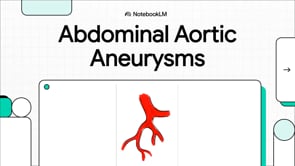本総説では、甲状腺結節は超音波検査で最大70%の人に認められる極めて一般的な所見であり、悪性はわずか7~15%に過ぎないと説明されています。本稿では、臨床評価、TSH血液検査、超音波検査、必要に応じた穿刺吸引細胞診(FNA)を含む系統的な評価アプローチを詳述しています。主な推奨事項として、大多数の人には定期的ながん検診は有益でないこと、分子検査は不確定な生検結果の解明に有用であること、治療方針はがんリスク因子と患者の希望に基づき個別化すべきことが挙げられています。
甲状腺結節の理解:患者のための診断と治療
目次
- はじめに:甲状腺結節とは?
- 甲状腺結節の頻度
- 甲状腺がんのリスク因子
- 包括的評価アプローチ
- 病歴と身体診察
- 検査室検査
- 画像検査
- 穿刺吸引細胞診(FNA)
- 分子検査の進歩
- 治療と管理の選択肢
- 長期経過観察とフォローアップ
- 研究の限界と考察
- 患者への推奨事項
- 情報源
はじめに:甲状腺結節とは?
甲状腺結節は、首の付け根にある甲状腺内にできる異常な増殖で、非常に一般的な病態です。これらの結節は実質性または液性であり、自覚症状がある人もいれば、他の病気の画像検査中に偶然見つかる人もいます。
甲状腺結節を評価する主な目的は、甲状腺機能を調べ、周囲組織を圧迫して症状を引き起こしていないか確認し、最も重要なこととして甲状腺がんの可能性を除外することです。大部分の結節は良性(非がん性)ですが、約7~15%は悪性であるため、適切な評価が不可欠です。
甲状腺結節の頻度
甲状腺結節は一般集団で非常に多く見られます。約5%の人に触診でわかる結節(触知可能結節)が認められます。しかし、触診より感度の高い超音波検査では、最大70%の人に甲状腺結節が発見されます。
甲状腺結節の頻度は年齢とともに増加し、高齢者ほど有する可能性が高くなります。興味深いことに、他の理由で行われたPET検査中に偶然結節が見つかった場合、悪性である確率は35%と、他の方法で発見された結節より有意に高くなります。
ほとんどの甲状腺結節は甲状腺濾胞細胞から発生します。単発性または多結節性甲状腺腫(複数の結節を伴う拡大甲状腺)の一部としての良性濾胞結節が最も一般的なタイプです。甲状腺がんの種類には、乳頭癌(症例の約85%)、濾胞癌(Hürthle細胞変異を含む、約12%)、髄様癌(2%)、未分化癌(1%未満)が含まれます。
甲状腺がんのリスク因子
特定の因子は、甲状腺結節ががんであるリスクを著しく高めます。これらのリスク因子には以下が含まれます:
- 放射線被曝:小児期の頭頸部照射、骨髄移植のための全身照射、放射性降下物、その他の放射線被曝(にきびや母斑の治療、職業的被曝など)
- 家族歴:第一度近親者における甲状腺がん、または甲状腺がんに関連する遺伝性症候群(Cowden症候群、Carney複合、多発性内分泌腫瘍症2型、Werner症候群、家族性大腸ポリポーシス)
- 結節の特徴:増大する結節または急速な成長
- 人口統計学的因子:男性、20歳未満または70歳以上
- 身体所見:頸部リンパ節腫脹(首のリンパ節の腫れ)、嗄声、不規則/硬い結節、周囲組織に固定された結節
- 検査結果:TSHが正常上限または高値、超音波所見が疑わしい、PET陽性、または血清カルシトニン値が50-100 pg/mL超
これらのリスク因子があるにもかかわらず、甲状腺がんは一般に予後が極めて良好です。5年全生存率は96.1%で、診断後1年生存した患者では5年生存率は98.2%に改善します。この好ましい見通しは、最も一般的で治療可能な形態である乳頭癌によって大部分がもたらされています。
包括的評価アプローチ
甲状腺結節の評価には、完全な全体像を提供するために連携する4つの主要な要素が含まれます:
- 臨床病歴と身体診察
- 血清甲状腺刺激ホルモン(TSH)測定
- 甲状腺超音波検査(専門家による実施)
- 結節のサイズと特徴に基づく穿刺吸引細胞診(FNA)
血清TSHレベルが抑制(低値)されている場合、医師はテクネチウム-99(99Tc)を使用した甲状腺シンチグラフィを推奨し、異なるタイプの結節を区別することがあります。この検査では「ホット」結節(めったにがん性ではない)、中毒性多結節性甲状腺腫、または稀に甲状腺炎やバセドウ病が甲状腺結節と併存していることを同定できます。
一般集団に対する定期的な甲状腺がん検診は推奨されていないことに注意が必要です。米国予防医学専門委員会は、小児期または思春期の放射線被曝歴や甲状腺がんに関連する遺伝性症候群がある高リスク個人を除き、無症状の成人における甲状腺がん検診を推奨していません。
病歴と身体診察
甲状腺結節がある場合、医師は徹底的な病歴と身体診察を行います。甲状腺と頸部リンパ節の触診を含む頸部検査は、甲状腺結節患者の定期的な身体診察の一部であるべきです。
最も典型的には、甲状腺がんは無痛性の結節として現れ、患者はその成長に気づかないことさえあります。甲状腺結節の最近の急速な成長は、浸潤性がんを示唆する可能性があり、痛みを伴うことがあります。このシナリオは、発熱などの全身症状を伴う亜急性結節性甲状腺炎と鑑別する必要があります。
突然の増大、特に痛みを伴う場合は、結節内出血を示唆し、悪性腫瘍と関連することは稀です。嗄声は、甲状腺がんによる反回喉頭神経への浸潤の可能性を示唆します。mass effect(占拠性病変による影響)の症状には、嚥下困難;特定の体位での頸部不快感;および稀に、呼吸困難や喘鳴が含まれる可能性があります。
身体診察中、医師は甲状腺結節のサイズ、位置、質感を特徴づけます。結節の硬さ、固定性、発声障害、頸部リンパ節腫脹は悪性を示唆します。しかし、より一般的には、甲状腺がんは明らかな悪性の臨床特徴を示しません。
検査室検査
血清甲状腺刺激ホルモン(TSH)は、甲状腺結節があるすべての患者で測定すべきです。大多数の人は正常なTSHレベルです。低いまたは抑制されたTSHレベルは、機能亢進性結節または中毒性甲状腺腫を示唆する可能性があり、これらの症例では遊離サイロキシン(fT4)および/または遊離トリヨードサイロニン(fT3)レベルを測定すべきです。
稀に、バセドウ病が多結節性甲状腺腫の文脈で発生することがあります。持続的に抑制されたTSHと正常なfT4およびfT3レベルは、潜在性甲状腺機能亢進症を定義します—これは心房細動と骨量減少のリスク増加(特に閉経後女性)、および顕性甲状腺中毒症の発症リスクと関連する状態です。
一過性の甲状腺機能亢進期を呈することがある橋本甲状腺炎は、TSH上昇または甲状腺機能低下症の通常の原因です。TSH上昇または正常上限内のTSHは、甲状腺結節内の悪性腫瘍のリスク増加と関連することが報告されています。
TSH受容体抗体または甲状腺ペルオキシダーゼ抗体の測定は、自己免疫性甲状腺疾患が疑われる場合を除き適応となりません。定期的な血清カルシトニン測定は、多発性内分泌腫瘍症候群2型の家族成員および乳頭癌と一致しない疑わしい画像や細胞診がある患者を除き、推奨されません。
画像検査
触知可能な甲状腺結節または他の画像検査で検出された結節があるすべての患者は、専門家による甲状腺超音波検査を受けるべきです。甲状腺超音波検査により、甲状腺のサイズ、個々の結節の位置と特徴の記録が可能となり、身体診察では明らかでない追加の結節を一般的に検出します。
悪性が疑われる結節の特徴には、実質性または主に実質性、縦長、低エコー性(周囲組織より暗い)、不整な辺縁、微小石灰化、halo(halo sign)の欠如、血管増生の増加が含まれます。結節が純粋に囊胞性、典型的なコロイドエコー(ring downまたはcomet tail artifact)を有する、または海綿状(多囊胞性成分が結節体積の50%以上を占める)である場合、良性である可能性が非常に高いです。
これらの特徴に基づき、アメリカ甲状腺学会(ATA)はFNAの結節選択を支援するために結節をリスクカテゴリーに分類します。オーストラリアのいくつかの放射線科プロバイダーは、標準化された報告のためにアメリカ放射線学会甲状腺イメージング報告データシステム(TI-RADS)の採用を開始しています。
構造的評価を可能にする頸部超音波とは対照的に、放射性核種(テクネチウム-99, 99Tc)甲状腺シンチグラフィは結節の機能的評価を提供します。これは、機能亢進性(「ホット」)結節または中毒性多結節性甲状腺腫を診断するためにTSHが抑制されている場合にのみ実施すべきです。このタイプの検査は、TSHレベルが正常または高い場合には実施すべきではありません。
圧迫症状を伴う多結節性甲状腺腫がある場合、非造影CTスキャンは、胸骨後進展の程度、気管偏位、気管腔の口径を評価するのに有用です。静脈内造影剤の使用は、より良い構造的解像度を提供しますが、甲状腺切除後の放射性ヨウ素治療のタイミングを約2ヶ月遅らせるため、議論の余地があります。
穿刺吸引細胞診(FNA)
FNAは甲状腺結節の細胞学的評価を提供し、その主な目的は不必要な手術のリスクを減らし、乳頭および髄様癌に対して複数回ではなく単回の手術を容易にすることです。2015年ATAガイドラインは、1.5 cm以上の結節、または高または中等度リスクの超音波特徴がある1.0 cm以上の結節に対してFNAの使用を推奨しています。
1.0 cm未満の疑わしい結節のルーチン検査が転帰を改善するというエビデンスはありません。疑わしいリンパ節は細胞診のためにFNAを施行し、サイログロブリン測定のために針洗浄液を採取すべきです。正常なリンパ節にはサイログロブリンは含まれておらず、測定可能な濃度は甲状腺癌転移が疑われます。
海綿状または純粋囊胞性など超音波所見でリスクが極めて低い場合、FNAは2.0 cm以上の結節に限定してもよいです。あるいは、リスクが極めて低い結節については臨床的または超音波的な変化を経過観察してもよいです。余命が限られている患者や手術リスクが許容できないほど高い患者でも経過観察が適切な場合があります。
多結節性甲状腺腫がある場合、各結節は上記の基準に基づいてFNAの適応を評価すべきです。ほとんどの場合、FNAが必要な結節は全くないか、多数の結節のうちごく少数のみがFNA適応となります。FNAの適応がない場合、12~24か月後に甲状腺超音波検査の再検を考慮してもよいです。
甲状腺細胞診はベセスダ分類システムに従って報告すべきです。良性所見は全FNAの約70%、意義不明所見(濾胞性病変/意義不明の異型[FLUS/AUS]および濾胞性腫瘍/濾胞性腫瘍疑い[FN/SFN])は10~15%、非診断的または不満足な検体は約15%です。
非診断的または不満足な結果の割合は、FNA適応結節の適切な選択、超音波ガイド下でのFNA施行、2~5回の針穿刺、囊胞性結節の実質部分へのターゲティング、適切な検体採取のための即時確認、経験豊富な甲状腺細胞診医による評価によって減少させ得ます。
分子検査の進歩
FNA検体の分子解析(オーストラリアではまだ広く利用可能ではない)は、甲状腺癌に関連する変異の有無を評価することにより、手術適応の結節選択を改善する可能性があります。これらの先進的検査は、細胞診結果が不確定な場合に良性と悪性の結節を区別するのに役立つ遺伝子マーカーを解析します。
Afirma遺伝子発現分類器は167遺伝子のmRNA発現を解析し、意義不明の細胞診を呈する結節において94~95%の高い陰性的中率を提供します。これにより悪性を否定する有用な検査となり、即時手術の必要性を回避し得ます。別の検査であるThyGenXは、次世代シーケンシングを用いて8つの甲状腺癌関連遺伝子の変異とRNA転座融合マーカーを同定し、陰性的中率94%、陽性的中率74%を有します。
ThyroSeq v2は次世代シーケンシングを用いてThyGenXよりも多数の遺伝子変異とRNA融合タンパク質を解析し、より優れた陰性および陽性的中率を提供する可能性があるが、さらなる研究が必要です。有望ではあるものの、三次専門センターで開発されたこれらの分子ツールの性能特性が日常臨床で使用された場合にも同様であるかは不明であり、さらなる検証が必要です。
治療と管理の選択肢
単発性の熱結節または持続的にTSHが抑制されている中毒性多結節性甲状腺腫は、通常放射性ヨウ素(131I)で治療すべきです。抗甲状腺薬の前投与が必要な場合、TSHがまだ抑制されている間に131Iを投与すべきです。これにより自律性のない甲状腺組織が131Iを取り込むのを防ぎ、甲状腺機能低下症のリスクを減らせます。大きな中毒性病変、画像所見が疑わしい症例、若年患者では手術が望ましい場合があります。
全甲状腺摘出術は、通常悪性が確定または疑わしいFNA細胞診所見に対して適応となります。高危険因子がある場合、または分子マーカーが悪性を予測する場合の、意義不明のFNA細胞診(FLUS/AUSおよびFN/SFN)に対しても考慮され得ます。
オーストラリアでは、ほとんど全ての甲状腺癌に対して全甲状腺摘出術が通常の治療法でした。最新のATAガイドラインでは、4.0 cm以下の低リスク甲状腺癌に対して甲状腺葉切除術の考慮を認めています。しかし、この推奨を支持する確定的なエビデンスがないため、ガイドラインは「治療は個別化すべき」としています。
例えば、1.0 cm未満の乳頭癌1465例を前向きに10年間経過観察した日本の研究では、10%未満が進行し、乳頭癌による死亡はありませんでした。4.0 cm未満の低浸潤性濾胞癌も甲状腺葉切除術で管理可能であり、これは広く受け入れられている診療です。
コンパートメント指向のリンパ節郭清は、通常乳頭癌と髄様癌で、時に濾胞癌とハースル細胞癌で、リンパ節転移がある場合に必要です。予防的リンパ節郭清は依然議論の余地があります。可能な場合、外科的切除が最良の選択肢であり、遠隔転移がなく隣接組織が浸潤されている場合にはその部分切除を伴うこともあります。
長期モニタリングと経過観察
診断的不確実性や患者の希望がある場合、診断性葉切除術が適応となり得ます。手術リスクが高いまたは余命が短い場合、保存的アプローチが合理的です。意義不明のFNA所見の結節を経過観察する場合、6~12か月後に甲状腺超音波検査を再施行し、結節体積が50%増加または少なくとも2 mm以上の2径で20%増加した場合にはFNA再施行が推奨されます。
患者が若年で結節が大きいまたは増大している場合、一見良性の結節に対しても継続的な严密観察や再生検ではなく、将来の切除が非常に可能性が高い特に場合は、手術を考慮するのが現実的です。
別の論点は、4.0 cmを超える結節でFNA所見が良性の場合に手術を提供すべきかどうかです。7348結節(うち癌は927結節[13%])の後ろ向きコホート解析では、1.0~1.9 cm結節の10.5%が癌であったのに対し、2.0 cm超の結節の15%が癌でした。4.0 cm超の382結節の前向き研究では、甲状腺癌率22%、偽陰性細胞診率10.4%と報告されています。
悪性リスクが0~3%の良性FNA所見結節の適切な経過観察頻度については依然不確実です。しかし、12~24か月後に甲状腺超音波検査を再施行するのが合理的です。結節が上記の基準で増大した場合、FNAを再施行すべきです。細胞診が再び良性の場合、超音波所見で疑わしい特徴や触診上の臨床的変化がない限り、さらなる超音波検査は不要です。
結節増大抑制のための甲状腺ホルモン抑制療法は、有効性が示されておらず有害作用があるため推奨されません。
研究の限界と考察
本総説は、甲状腺結節の現在の理解におけるいくつかの重要な限界を認めています。甲状腺結節は非常に一般的であるにもかかわらず、臨床意思決定を導く無作為化比較臨床試験データは乏しく、一部は甲状腺癌の通常良好な予後によるものです。
代わりに、アメリカ甲状腺学会(ATA)などの学会ガイドラインの推奨は、主に観察研究と専門家の意見に基づいています。甲状腺結節管理の主な課題は、悪性であるものを同定するとともに、甲状腺超音波検査、FNA、手術の不適切な過剰使用を回避することです。
このバランス達成は、過去30年間の甲状腺癌発生率増加が過剰診断だけでなく真の発生率増加にも起因することを示唆する米国、英国、オーストラリアからの最近のエビデンスの文脈で考慮すべきです。この発生率増加の理由には、肥満や電離放射線の既知の影響以外の化学物質曝露などの環境要因を含む、修正可能な因子への曝露増加が含まれ得ます。
患者への推奨事項
この包括的総説に基づき、甲状腺結節患者は以下すべきです:
- 4つの要素全てによる適切な評価を確保する:病歴/診察、TSH検査、専門医超音波検査、および適応時のFNA
- 大多数の結節が良性であり、癌は7~15%に過ぎないことを理解する
- 甲状腺癌は適切な治療で一般に予後が極めて良好であることを認識する
- 医療提供者と個人の危険因子について議論する
- 生検結果が意義不明の場合、分子検査を考慮する
- 治療決定に積極的に参加し、それは個別の状況に基づいて個別化されるべきである
- 推奨される経過観察スケジュールを遵守する
- 特定の高危険因子がない限り、不必要な甲状腺癌検診を避ける
患者は医療チームとオープンなコミュニケーションを維持し、必要時に甲状腺疾患の経験豊富な専門医の診療を受けるべきです。
出典情報
原題: Thyroid nodules: diagnosis and management
著者: Rosemary Wong, Stephen G. Farrell, Mathis Grossmann
掲載誌: Medical Journal of Australia
注: この患者向け記事は、Medical Journal of Australiaに掲載されたピアレビュー研究に基づき、教育目的で原著科学内容を包括的に翻訳したものです。




